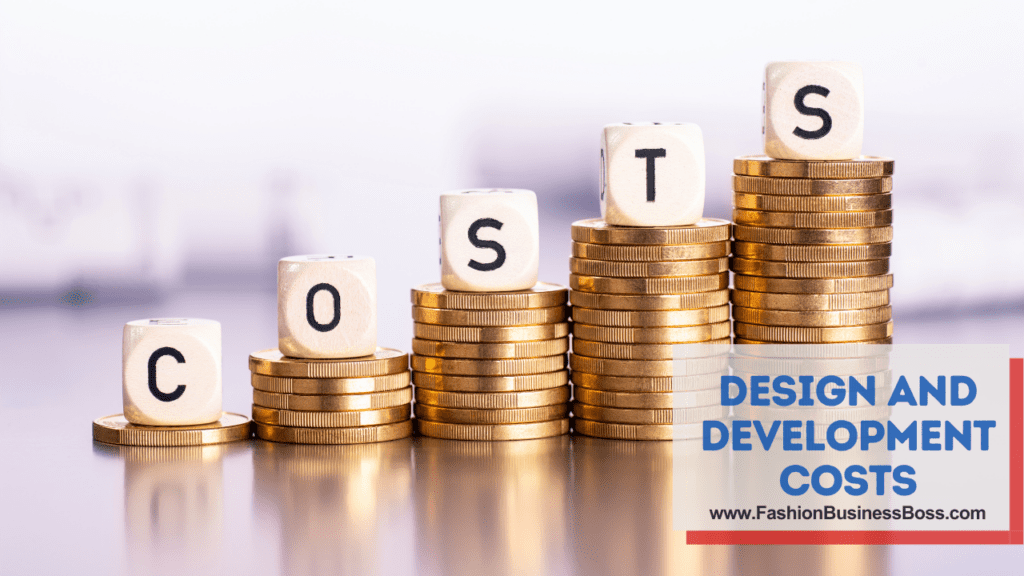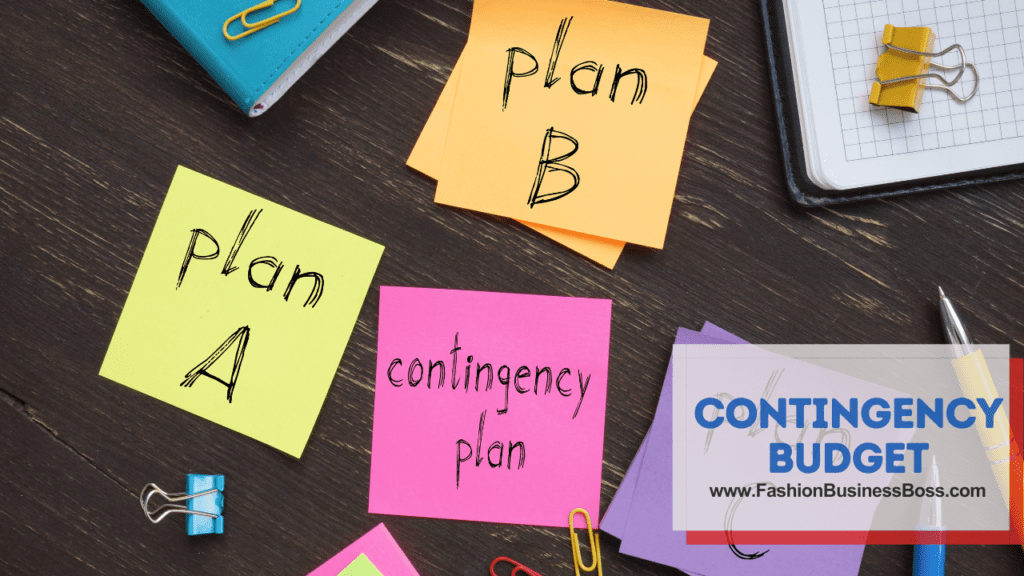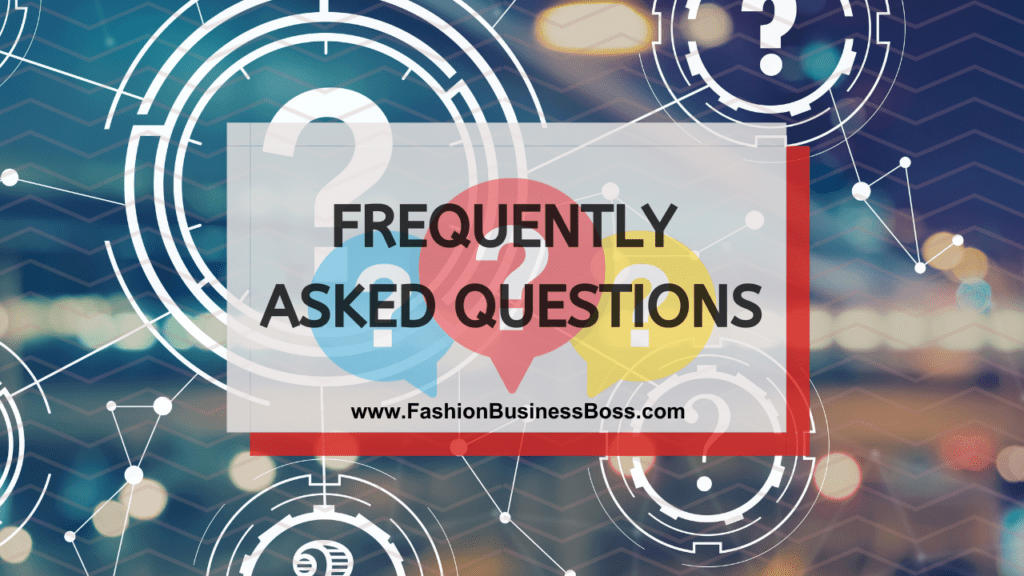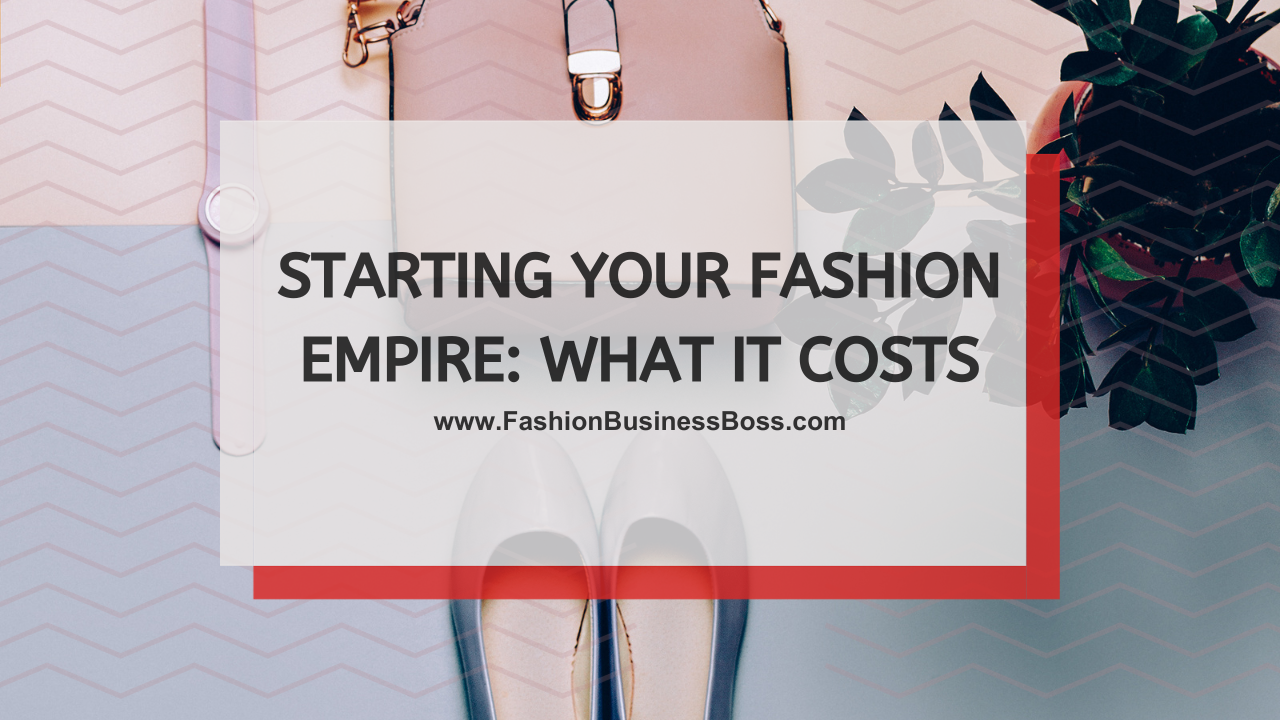Launching a clothing business can be a dream come true, but it’s essential to have a clear understanding of the financial aspects involved. From designing your collection to setting up an online store or a physical boutique, there are numerous costs to consider.
To start a clothing business, you’ll need to budget for design, manufacturing, branding, inventory, and marketing. Costs can vary widely but typically range from $10,000 to $50,000, depending on your scale and ambitions.
In this article, we’ll break down the expenses you’ll encounter when starting your clothing business, ensuring you’re well-prepared for this exciting journey.
Design and Development Costs

To start a clothing line, your first step is creating your clothing designs. This involves drawing your ideas, making patterns, and finding fabrics. The price of this stage depends on how complicated your designs are and how many clothing pieces you plan to create. It might cost a few hundred dollars for simple designs or go up to several thousand dollars for more intricate ones.
Before making lots of your clothing, you need to make samples to check how your designs fit and look. The cost of making these samples varies depending on your designs and the materials used. It can be around $500 for simpler items, but if your designs are complex and require special materials, it could cost $5,000 or more.
By understanding these costs, you’ll be better prepared to plan your budget for starting your clothing business.
Read more about: Starting My Own Clothing Brand: Fashioning Dreams into Wardrobes
Manufacturing Costs
Once you’ve given the green light to your clothing samples and are ready for full-scale production, finding the right manufacturer becomes crucial. Manufacturing expenses can vary significantly based on several factors, such as the location of the manufacturer, the quantity of clothing pieces you intend to produce, and the complexity of your designs.
On average, you should allocate a budget ranging from $5,000 to $20,000 for your initial production run. However, it’s essential to understand that this is a general estimate, and actual costs may fall within or exceed this range. The final expenses depend on various variables, including the choice of materials, labor costs, and the specific production location you opt for.
By comprehending these manufacturing costs, you’ll be better prepared to create a realistic budget as you take the next steps in establishing your clothing business.
Branding and Marketing Expenses
Establishing a distinct brand identity plays a vital role in the clothing business. This encompasses several aspects, such as crafting a logo, designing labels for your clothing items, and creating packaging that reflects your brand. The expenses associated with branding can vary significantly, mainly contingent on your preferences and choices.
The cost of branding typically falls within a range of a few hundred to a few thousand dollars. Simpler designs and basic packaging tend to be more affordable, while intricate logos and specialized packaging materials may push the costs higher. It’s important to carefully consider your branding choices while staying within your budget.
By understanding the costs related to branding, you can make informed decisions about how to present your clothing brand to the world and allocate your resources wisely. This ensures that your brand identity aligns with your vision and resonates with your target audience.
Inventory Costs

Building up inventory is a fundamental aspect of running a clothing business. The exact amount you need to invest in inventory depends on several factors, including the variety of clothing items you plan to offer and your anticipated sales volume.
Typically, when starting your clothing business, you should budget for inventory costs that can fall within the range of $5,000 to $20,000 or even higher. This financial allocation is necessary to ensure you have an ample supply of clothing items to meet customer demand.
The specific costs associated with inventory may include purchasing clothing pieces, storing them in a suitable location, and managing your stock effectively to avoid overstocking or running out of popular items.
By understanding these inventory costs, you can plan your budget carefully to strike the right balance between having enough clothing items in stock to satisfy customer demand and managing your financial resources wisely. This ensures that you can meet customer needs while maintaining a healthy bottom line for your clothing business.
Read more about: Starting Strong: Equipment for a New Clothing Store
Operating Expenses
Operating expenses refer to the continuous expenditures necessary to keep your clothing business running smoothly. These costs encompass a range of items, including rent (if you have a physical store), utilities such as electricity and water, insurance to protect your business assets, and employee salaries if you have staff.
It’s important to note that operating expenses can vary widely depending on various factors. The location of your physical store, the size of your workspace, and the number of employees you hire all play a role in determining the extent of these expenses.
Rent for commercial space, for instance, can vary significantly depending on the region and the size of the premises. Utility costs fluctuate based on usage, while insurance premiums depend on your coverage needs. Employee salaries, if applicable, depend on their roles and the local wage standards.
To manage your clothing business effectively, it’s essential to budget carefully for these operating expenses. Understanding the variability and nature of these costs allows you to allocate your financial resources wisely and ensure the ongoing stability of your business operations.
Legal and Licensing Fees
To operate your clothing business legally, certain legal and licensing requirements must be met. These include registering your business, obtaining necessary permits, and, in some cases, trademarking your brand name and logo.
The costs associated with these legal and licensing procedures can vary widely, depending on your location and the specific requirements. Generally, you should anticipate spending anywhere from a few hundred to a few thousand dollars to fulfill these obligations.
Registering your business typically involves fees for filing the necessary paperwork with the appropriate government authorities. Obtaining permits may also incur fees, and the amount varies based on the type of permits required by your local regulations. Trademarking, if you choose to do so, involves application fees and legal consultation expenses.
Understanding and budgeting for these legal and licensing fees are essential to ensure your clothing business operates within the boundaries of the law. It helps you avoid legal complications that could potentially disrupt your business operations in the future, ensuring a smooth and compliant journey as an entrepreneur in the clothing industry.
Contingency Budget

In the realm of business, unforeseen circumstances and unexpected expenses can surface at any time. To prepare for such situations, it’s prudent to establish a contingency budget. This serves as a financial safety net to help you navigate challenges that may arise unexpectedly.
It’s advisable to allocate a portion of your startup budget specifically for contingencies. A common guideline is to set aside at least 10% of your overall startup budget for this purpose. This means that if your initial budget for starting your clothing business is $50,000, you should allocate $5,000 for contingencies.
Contingency funds can be used to address various unexpected costs, such as unexpected repairs, sudden changes in market conditions, or even personal emergencies that could impact your business. Having this buffer ensures that your business remains resilient and can adapt to unforeseen circumstances without jeopardizing its stability.
By incorporating a contingency budget into your financial planning, you are taking a proactive approach to safeguarding your clothing business’s financial health, ensuring its ability to endure and thrive in the face of uncertainty.
Read more about: Starting Strong: How to Create Your Clothing Line Business Plan?
Shipping and Fulfillment Costs
If you plan to sell clothing items online, you must consider the expenses associated with shipping and fulfillment. This aspect covers the costs related to preparing and delivering your products to customers who purchase them through your online store.
Components of Costs
Shipping and fulfillment costs comprise several components, including:
These include items like boxes, envelopes, and packing materials needed to protect and present your clothing items during shipping.
The fees charged by postal or courier services for delivering your products to customers. These fees can vary based on factors like package weight, size, and destination.
In some cases, businesses choose to outsource their fulfillment processes to specialized third-party providers. These providers handle tasks like packing, labeling, and shipping your orders, which can be a convenient option but comes with its own associated costs.
The specific expenses within shipping and fulfillment depend on factors such as the volume of products you sell online and the location of your customers. By accounting for these costs, you ensure that your financial planning is comprehensive and that you can provide a smooth and efficient online shopping experience for your customers while maintaining stability.
Technology and Software Expenses
In the modern era, running a clothing business often involves leveraging various software tools and technology solutions to streamline operations. These digital tools enhance efficiency and effectiveness in tasks such as managing inventory, handling finances, and creating promotional materials.
When planning your budget for your clothing business, it’s essential to allocate funds for these technology expenses. The specific costs can vary widely, primarily depending on your business’s unique needs and preferences.
For instance, you may need inventory management software to keep track of your clothing items, ensuring you have the right products in stock. Accounting software helps you manage your finances and keep track of income and expenses. Graphic design programs are essential for creating eye-catching marketing materials that promote your brand.
The expenses associated with technology and software tools can range from a few hundred to a few thousand dollars. By budgeting for these necessary digital resources, you ensure that your clothing business operates efficiently and remains competitive in the digital age, all while maintaining control over your financial resources.
Returns and Quality Control

In any business, including clothing, it’s important to anticipate the possibility of customers returning items they’ve purchased. To manage this, you’ll need a well-structured process in place to efficiently handle returns and provide satisfactory solutions to your customers. This process may require some financial resources to implement effectively.
Maintaining the quality of your clothing products is crucial for customer satisfaction and the reputation of your brand. It involves regular quality control checks to identify and address any defects or issues in your clothing items. Ensuring quality may also require investing in better materials or production processes, which can have associated costs.
By acknowledging the potential expenses related to returns and quality control, you can prepare your clothing business to handle these situations smoothly. This not only helps maintain customer trust but also contributes to the long-term growth and sustainability of your brand in the competitive clothing market.
Read more about: Starting Your Clothing Business: A Roadmap to Triumph
Conclusion
Starting a clothing business requires careful financial planning. While the specific costs can vary widely based on your choices and circumstances, having a solid understanding of the expenses involved is crucial for your growth. By budgeting for design, manufacturing, branding, marketing, inventory, operating expenses, legal fees, and contingencies, you’ll be well-prepared to embark on your journey as a clothing business owner.
Frequently Asked Questions

Q: What are the primary costs involved in starting a clothing business?
A: Starting a clothing business entails expenses for design, manufacturing, branding, inventory, marketing, and legal fees. The total cost varies based on your specific choices and business scale.
Q: How much to budget for manufacturing clothing items?
A: Manufacturing costs can range from $5,000 to $20,000 or more, depending on factors such as location, quantity, and complexity of your designs.
Q: What should I consider when budgeting for marketing my clothing brand?
A: When budgeting for marketing, allocate funds for online advertising, social media efforts, and potentially influencer collaborations. A monthly budget of $1,000 to $5,000 is a common starting point.
Q: Are there ongoing operating expenses for a clothing business?
A: Yes, operating expenses include rent (if you have a physical store), utilities, insurance, and potential employee salaries. These costs vary widely based on your business’s size and location.
Q: Do I need a contingency budget for my clothing business?
A: Yes, it’s advisable to set aside at least 10% of your startup budget as a contingency fund. This ensures you’re prepared for unexpected expenses that may arise during the early stages of your business.
To learn more about starting your own clothing business, check out my startup documents here.
Please note that the contents of this blog are for informational and entertainment purposes only and should not be construed as legal advice. Any action taken based on the information provided in this blog is solely at your own risk. Additionally, all images used in this blog are generated under the CC0 license of Creative Commons, which means they are free to use for any purpose without attribution.

Meet Shawn Chun: Entrepreneur and Fashion Business Fan.
I’m a happy individual who happens to be an entrepreneur. I have owned several types of businesses in my life from a coffee shop to an import and export business to an online review business plus a few more and now I create online resources for those interested in starting new ventures. It’s demanding work but I love it. I do it for those passionate about their business and their goals. That’s why when I meet a designer or boutique owner at a craft fair, farmers market, retail location or anywhere else I see myself. I know how hard the struggle is to retain clients, find good employees and keep the business growing all while trying to stay competitive.
That’s why I created Fashion Business Boss: I want to help fashion business owners like you build a thriving business that brings you endless joy and supports your ideal lifestyle.

